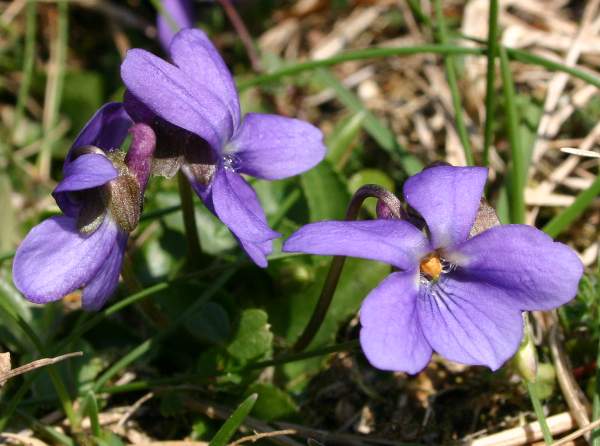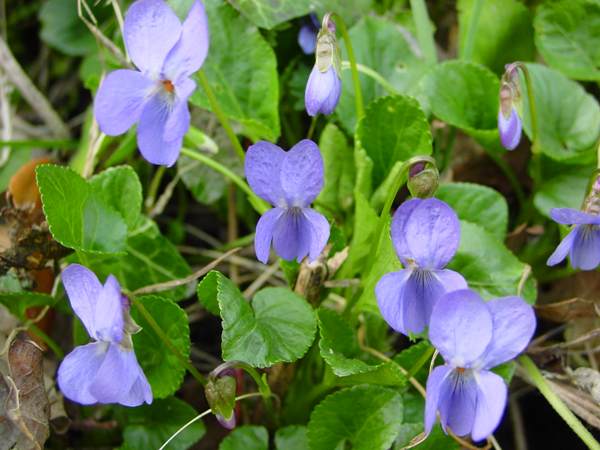Trees Birds Mammals Fish Amphibians Reptiles
Wild Algarve
Bookshop
Viola hirta - Hairy Violet
Phylum: Magnoliophyta - Class: Equisetopsida - Order: Malpighiales - Family: Violaceae

Usually preceded in Britain and Ireland only by Sweet Violets, the Hairy Violet is scentless.
Description
The Hairy Dog-violet has elongated heart-shaped leaves that have tiny hairs at least on the undersides. The pedicels (Flower stalks) are usually hairy too.
The leaves of Hairy Violets are a more elongated than the leaves of Sweet Violets. One shared characteristic of these two early species is that their sepals are rounded, whereas all other violet species commonly found in Britain and Ireland have pointed sepals.

Hairy Violets produce flowers usually 14 to 16mm across with pale violet petals. Unlike many other Viola species, this perennial plant does not spread via stolons.
A key distinguishing feature of the Hairy Violet is its flower spur, which is a darker violet (more purplish) than the petals and is neither notched nor furrowed towards its tip.

Habitat
Most commonly seen on roadside banks and woodland edges in chalk-rich areas, Hairy Violets often nestle among other taller vegetation so that they are easily missed.
Distribution
The Hairy Violet is common throughout most of England and Wales but rather less common in Scotland and in West Wales; it is found also on mainland Europe.
Blooming times
In Britain and Ireland, Hairy Violets bloom chiefly from March to June.
Uses
Fritillary butterflies make good use of the leaves of all kinds of wild violets and pansies: these are their larval foodplants.
Similar species
Common Dog-violet Viola riviniana starts blooming slightly later in the year (but overlaps with Early Dog-violets and Hairy Violets) and in the kinds of habitats that Early Dog-violets and Hairy Violets favour.
Sweet Violets Viola odorata, usually the first violet species we find in the wild in Britain, have downy stems and leaves; they grow in woods. As the name suggests, they have a strong and pleasant scent.